
We can argue about exactly when and where it happened. I’d skate over the Autobianchi A112 Abarth (too small, not powerful enough) and the Mini Cooper (not actually a hatch) and locate it in Wolfsburg in the mid-Seventies with the Golf GTI or Paris with the R5 Gordini Turbo.
Whatever, back in the mists of time, the idea of the hot hatch was had. And it was good. It was a mash-up of two fine things. First thing, the hatchback itself: a versatile car, big enough for most of us but small enough to be handy and affordable. Other thing: a too-big engine. A well-developed hot-hatch is agile and punchy and it abundantly over-delivers on thrills. Yet in the daily grind it shows an innocent face, quietly justifying itself to your spouse, kids and fleet manager.
If an idea can embody such a magical portfolio of qualities over so many decades, it must have a fundamental rightness. Like some hopeless Hollywood producer endlessly pitching formulaic remixes of earlier hits, the car industry just can’t stop thinking in a depressingly binary fashion. So it assumes the hot-hatch formula can do a roll-out, and takes any other big-selling category and rams in a big engine, stiffens up the springs and swaps out the seats. Hmmmm. Hatch plus hot equals gold, but that doesn’t necessarily mean that crossover plus hot, or electric plus hot, or estate plus hot, will necessarily also strike it rich…

Much as TG welcomes diversity in the automotive biosphere, and particularly notes that a surplus of horsepower seldom brings ill, we do feel bound to take a glance in the door-mirror of history. See, it’s not like we haven’t been here before. Back when it was the custom for regular hatches to spawn saloons and cabrios, they too got the soup-up treatment. Flotsam like the Renault 19 Chamade 16v and the Ford Escort XR3i Cabrio was foisted on us. With the wisdom of hindsight it’s unsurprising that customers proved sparse.
Later on, people carriers were where it was at, and sure enough some folk – only a few – found themselves driving, through a veil of tears, a Zafira VXR. What a Frankencar that was. In the face of such a parade of historical failure, you’d imagine the world’s carmakers might be sadder and wiser. But no. Here they come again with a new cohort of hot-not-hatches.
We at Top Gear might be sceptical, but we’re also scrupulously fair. We’ve brought those cars together to give them a chance. To no great surprise, the ones that work best are the ones that don’t wander too far from the established formula. The Hyundai i30N Fastback drives like an i30N hatch. The boot’s bigger, and when squinted at from a certain rearward points of view, it slightly resembles a Mercedes. It’s a twin to the hatch, just a non-identical one.
The Kia has an interesting body style and we commend it because we love slinky estates. The ones from higher up the food chain are great guilty pleasures. Who among us, hand on heart, can say they’ve never craved an Audi RS Avant or Alfa 156 Sportwagon? But does the idea work when you peg it at the price and power of a hot hatch? Or in this case slightly lower?
Broadly, yes. The Proceed GT is in many ways easier to like than the straight-no-chaser hatchback Ceed GT, a car that’s a hatchback but not these days a truly hot one. Its 204bhp just doesn’t quite cut it. The Proceed GT meanwhile is just a decently lively car that has a stylish and useful tail end. We can get on board with that. It’s fun through bends too. That’s because it’s not tall.
For a lesson in the benefits of lowness, have a go in a Civic Type R. You sit down among the wheels, and so when one corner hits a bump you aren’t pitched or rocked. It’s terrifically level and immediate because it’s not always fighting body roll. It’s the anti-SUV. Which is why it’s hard for an SUV or crossover to be a truly fun steer.

The Cupra Ateca (yep, we kept calling it “the Seat”) isn’t the first time hot-hatch genes have been spliced into a smallish crossover. That was the Mini Countryman Cooper S. And, come to think of it, the Countryman illustrates exactly the problem. Its mission is allowing lovers of fast Minis to carry their affection with them when family dictates a bigger car. But because the design is nearly but not quite Mini, and the dynamics nearly but not quite Cooper S, it just feels like a constant let-down, a pale imitation of the three-door that you really wished you could still have owned if life hadn’t intervened.
That’s a distillation of what’s wrong with the Ateca and Kodiaq. They’d be really good cars if only they’d only content themselves with what they are, instead of pretending to be something they aren’t and can’t be. The Skoda vRS is refined, nicely turned out and quite ridiculously useful. All the things that make us love the normal Kodiaq – it’s just a bit more brisk.
But how much better it is when you ignore the chequered-flag mode, switch the dash screen from a g-meter to showing what’s on Radio 3, set the dampers back into Comfort and turn off the silly false engine noise. It’d be better again if you got rid of the fake carbon fibre in the cabin and taped over the vRS badges. It’s not a sporty car and the pretence is its undoing. Even the smaller, more agile five-seat Ateca isn’t a real hot hatch. It just doesn’t connect with the driver.
Strangely, the i3s does. Honestly, it’s chattier than the crossovers, even if those messages aren’t always the ones you want. Still, even if these wonderful moorland roads are obviously way outside a metropolitan EV’s comfort zone, it puts up a decent showing. But do we need the sportified i3s? The normal i3, innocent of the immodest arch extensions and raciness implied but not delivered, finds more harmony.
Drive the alternatives, then, and it’s quickly clear why the hot hatchback has thrived since the Seventies. Nobody used the word synergy back then. We relied on Aristotle’s coinage: the whole is greater than the sum of the parts. The parts of a hot hatch are often pretty mundane; it’s in their combination that the alchemy lies.
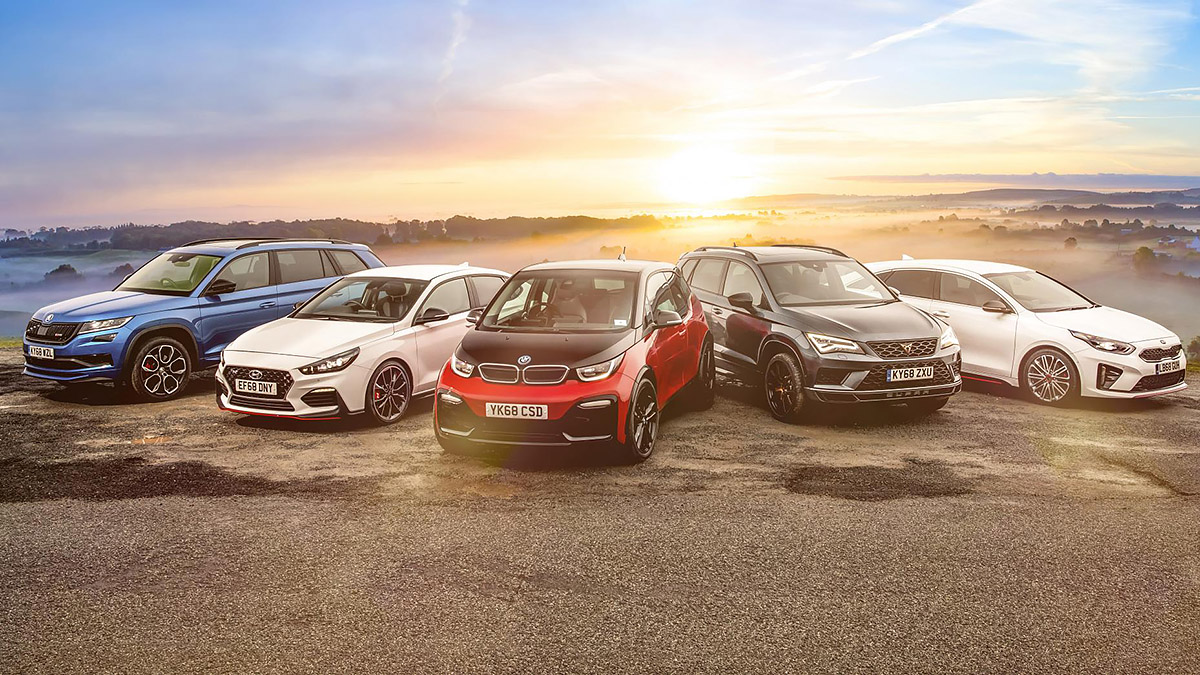
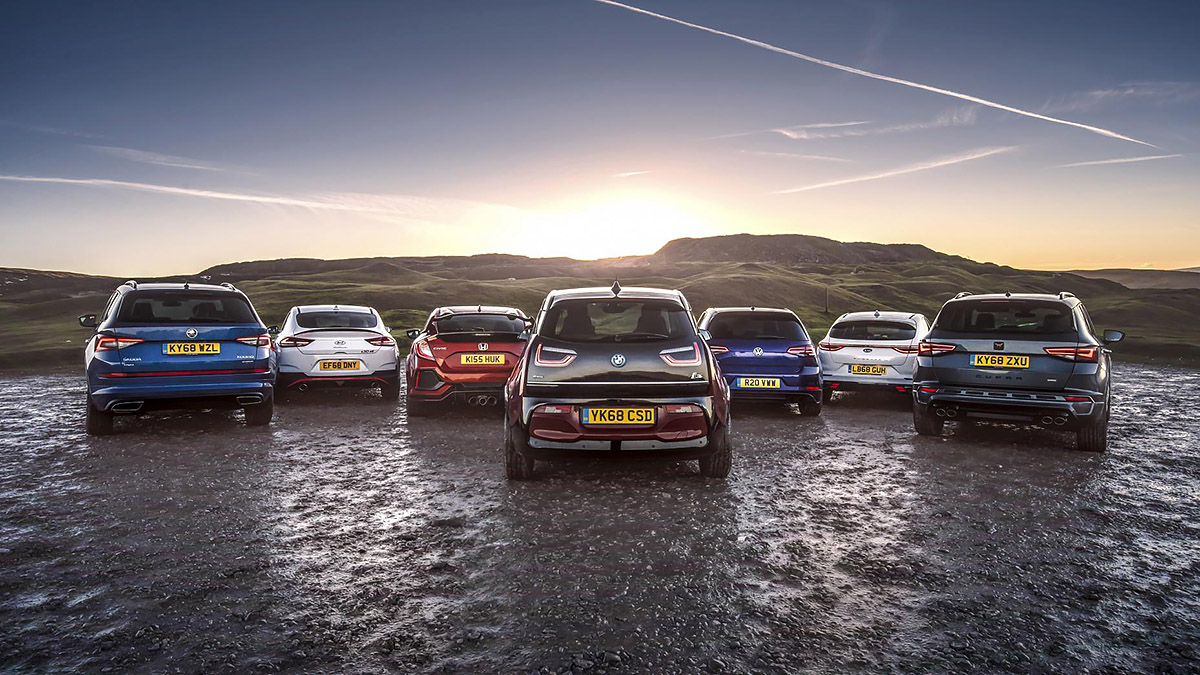
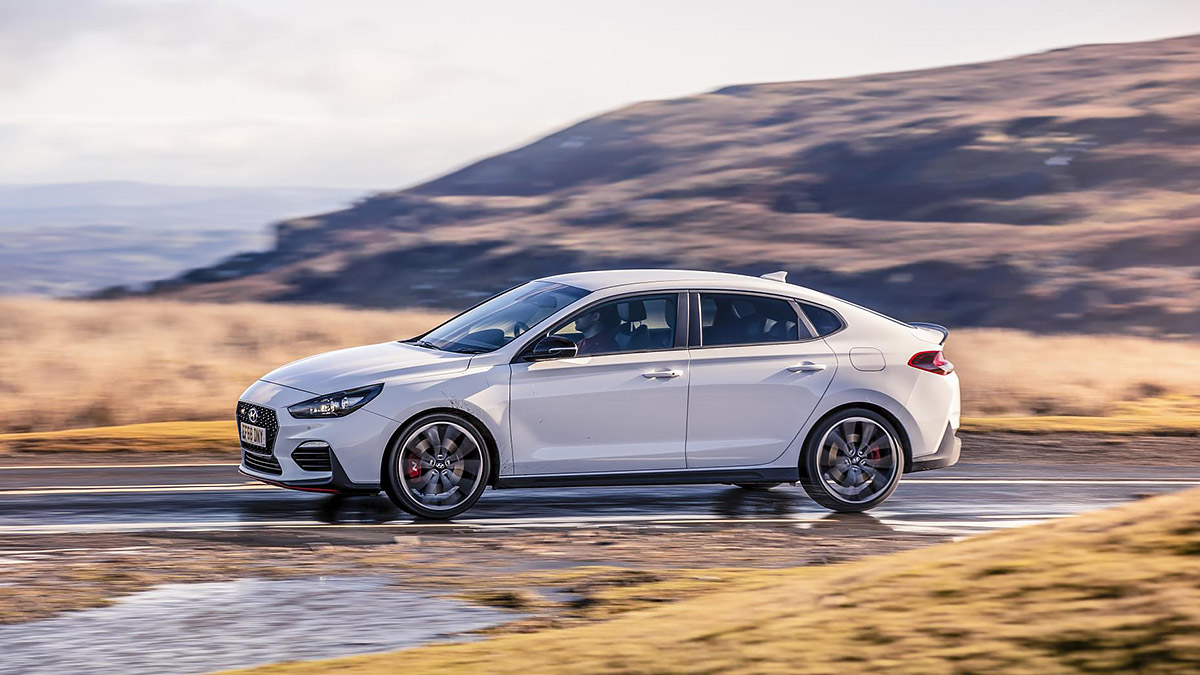

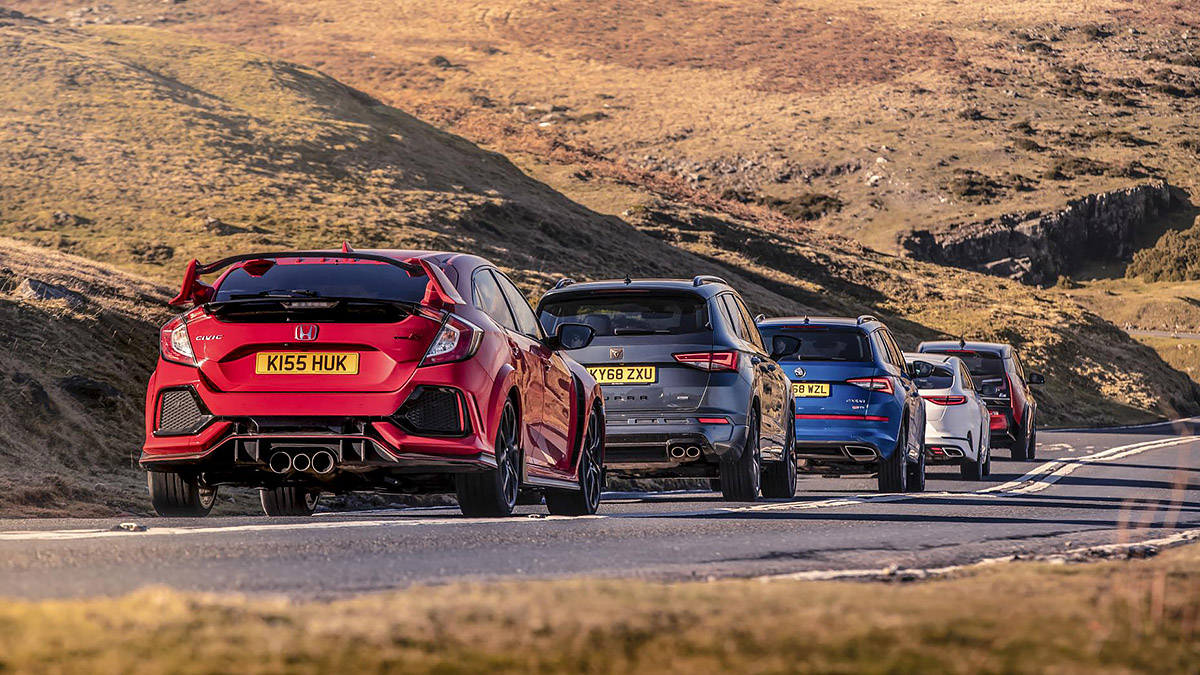
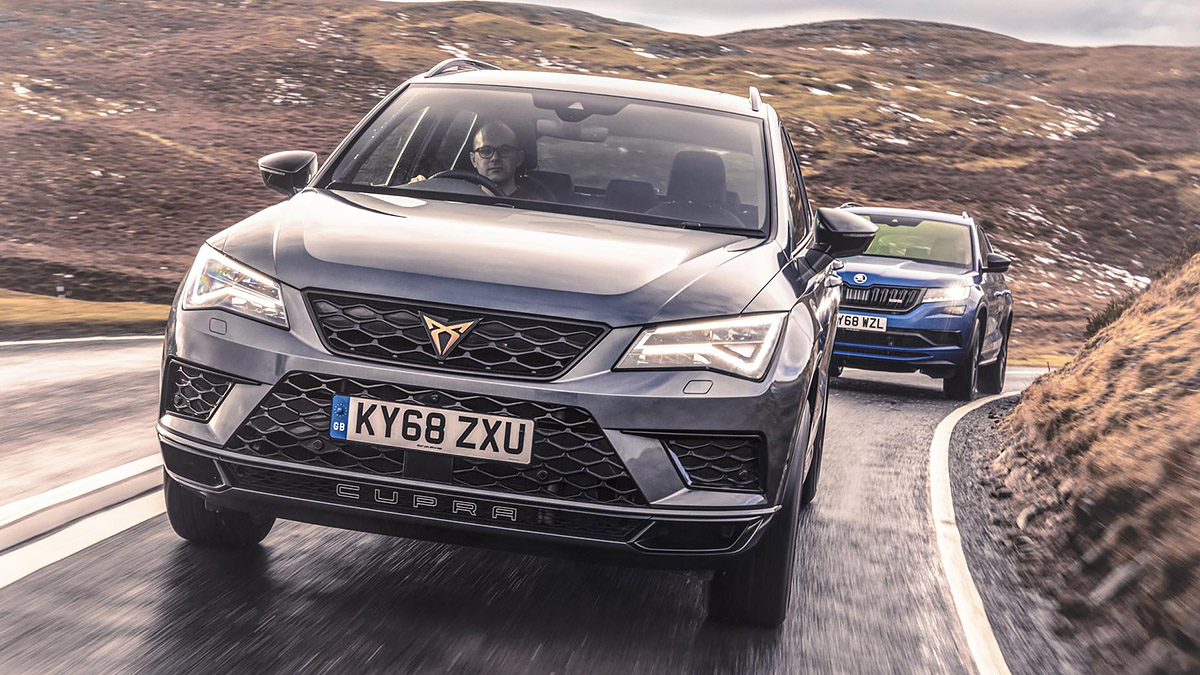
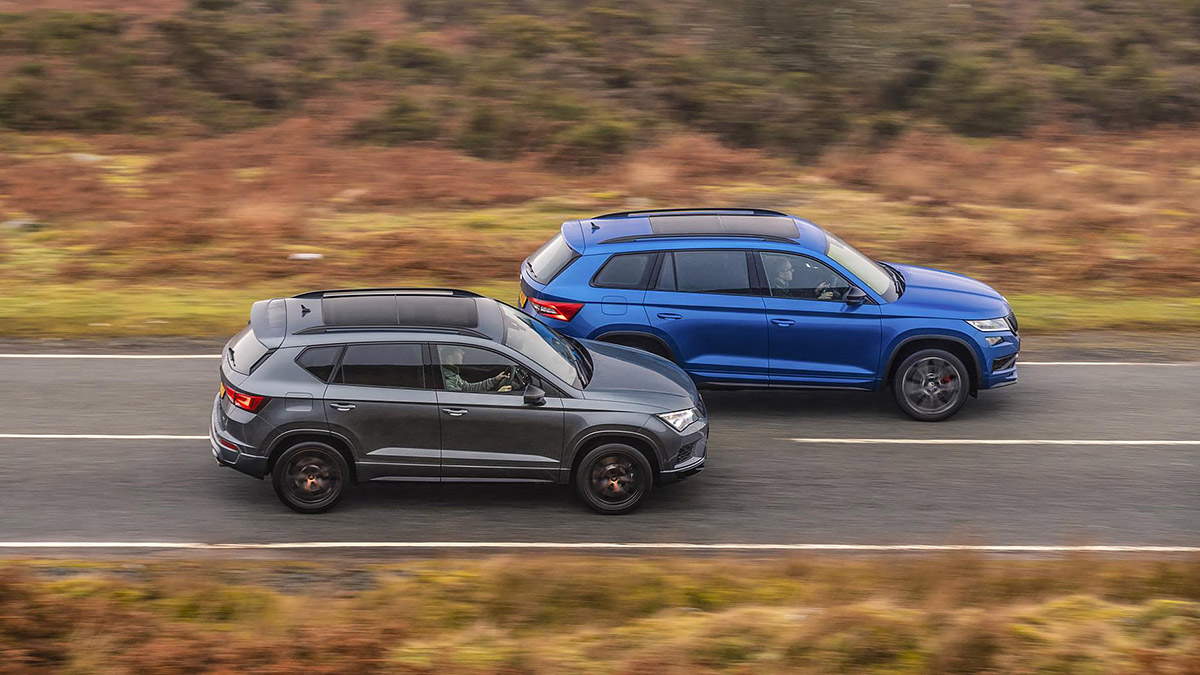
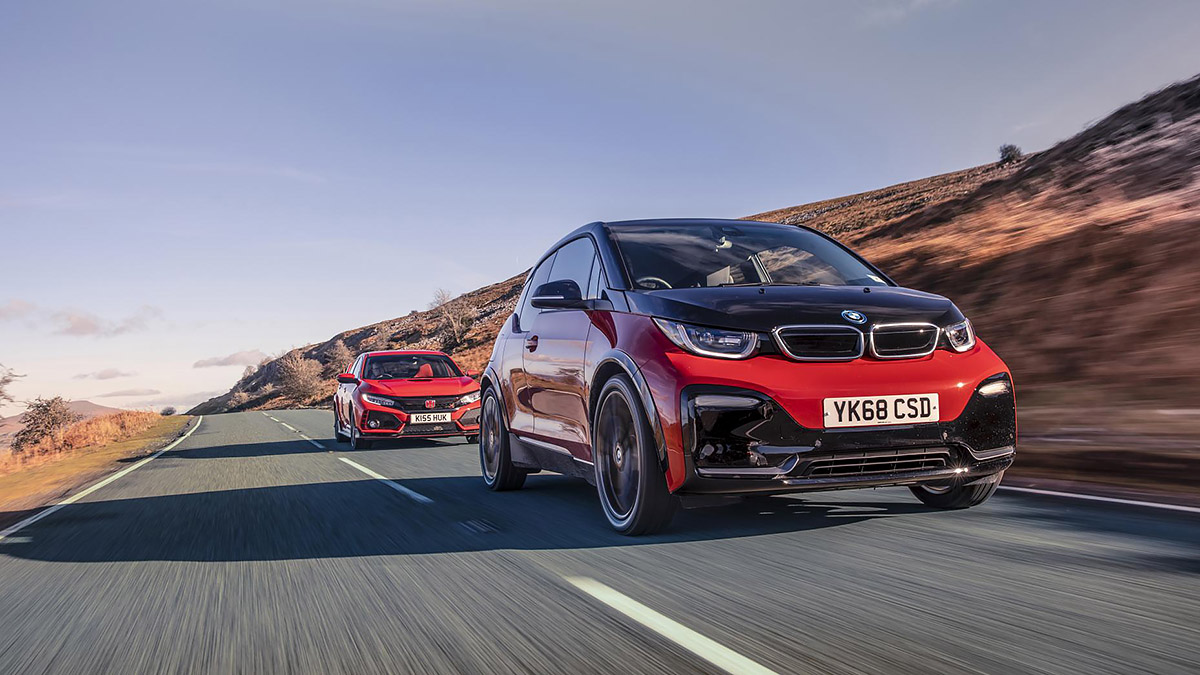
THE BENCHMARKS
Volkswagen Golf R
Of course we brought a fast Golf. Not the one you were expecting? Well, the GTI’s outgunned these days, and while the stripped-out Clubsport S was the best of what VW could do with a hatchback, it only built 150 and each had only two seats. Sorry, kids. The MkVII R was a shock that became a modern cult classic: the first 4WD super-Golf that was worth the premium over a GTI. The piped-in engine warble sounds the business, it’s hugely quick, agile through corners and ain’t ashamed of body roll. A comfy, subtle family supercar.
Honda Civic Type R
The opposite tactic to the Golf R. All attitude, wing, scarlet bucket seats, a turn of speed that dries eyeballs… and it’s only front-wheel drive. This is the apex of the modern superhatch, combining uncannily clever suspension that’s firm but beautifully controlled, 316bhp of fury from only 2.0 litres thanks to the wonders of turbocharging, and a sense that every control, from the brake pedal to the gearknob, was set up by a Japanese engineering professor turned racing driver. TG’s 2017 Car of the Year is the handling yardstick.
THE TECHY ONE
BMW i3s
The regular i3 has always offered far more amusement than you might expect by virtue of its lightweight architecture, instant torque and RWD. The i3s embellishes this with 10mm-lower suspension, 40mm-wider tracks and an additional 14bhp, for a 182bhp total.
Trundle the i3s around town, where it belongs, and it’s as whizzy, silent and joyful as a standard i3, and indeed most electric cars. It’s out of town where it offers something more. It requires a different driving style to the proper hatches it’s rubbing shoulders with, mind, else its skinny tyres will see you heroically understeer at the first corner.
You can’t barrel into corners, instead winding up its seamless power delivery as you approach their exit to propel yourself out at indecent haste. Which begins to flatten off at about 60mph, but that’s the speed limit anyway. Driving with vigour has a disastrous effect on its 160-mile real-world range, of course, but it’s heartening to know that as cars change, a sense of fun can remain intact.
THE GAUDY ONE
Cupra Ateca
Seat’s hung a whole brand off the idea of a humble Ateca blessed with a VW Golf R’s beating heart. Fun as it is to get bogged down in the bonkers semantics of trying to launch a luxury sub-brand with a tarted-up school bus, the Cupra does have its good points. Chiefly, the point when you lob it down the B4560 in the damp, expecting to get soaked by a torrential deluge of underwhelmment, and discover it’s fairly sorted.
Reminds us of a boring-sounding Audi RS3, in fact: all solidity and brainless point-to-point pace. Ironically, sitting up high means you’re better sighted to drive like a wally – and clatter into the Cupra’s talent barrier sooner. It’s competent, but fails to cloak its weight with clever suspension and mega brakes like the anti-physics SUVs of, say, Porsche or AMG. It’s an enigmatic curio, the Cupra, but not quite there as a satisfying hot hatch alternative, nor a socially acceptable super-tank.
THE FAMILY ONE
Skoda Kodiaq vRS
Might Skoda’s attempt to splice hot hatch and 4x4 DNA (using similar VW Tiguan & Co. foundations with a diesel twist) fare better? In a word: nope. Here’s the problem. The standard Kodiaq, which we like very much, thrives on being a reasonably priced box of sensibleness. Trashing the ride with thudding 20-inch rims, bolting another turbo to the 2.0-litre diesel engine to give more torque than a Porsche Panamera (but not doing enough to the brakes to match) and jacking the price up to £43,000 doesn’t gel with the Kodiaq’s friendly, useful, Thunderbird 2 character.
You spend the whole time perched in the admittedly fabulous bucket seat, thinking “Great, that overtake was a doddle, but wouldn’t I rather be a little more patient and have spent only £30k on an utterly fit for purpose Skodiaq diesel instead?” Everyone we encountered in south Wales loved the idea of the vRS… in five years. After depreciation had done its job.
THE MELTY ONE
Hyundai i30N Fastback
Twelve centimetres, 69 litres and £500. That’s what the Fastback gains in length, bootspace and price over the i30 hatchback. This slightly longer, sleeker take on Hyundai’s hot hatch does brag of a softer demeanour, thus there’s more compliant suspension in its Normal drive mode and a touch more stability approaching its grip limit. The latter is most tangible, the Fastback a bit less eager to lift a rear wheel or indulge you with a bit of opposite lock when you corner aggressively.
But the margins are slim, and exhibited only in extremity; in reality, this feels exactly as downright hilarious to hustle along as the hatchback, the sports exhaust strapped to its 271bhp 2.0-litre barking away, and its taut gearshift and chunkily weighted steering making you feel an integral part of keeping it on the straight and narrow. The Fastback is the most successful ‘not’ hatch here, precisely because it behaves just like the hot hatch it’s based upon.
THE WAGON ONE
Kia Proceed GT
While the i30N does raw thrills, the Proceed GT is calmer, smoother and more measured. There are clues it’s not for hardest-cored enthusiasts; lock the standard auto ’box in Manual and the instruments don’t display the gear you’re in, but the one you should be in for best economy. That it costs similar money to the Fastback (£28k v £30k) while offering three-quarters of the power will grate with some, but it simply means the Proceed is free of the i30N’s wheelspin and torque-steer when you’re too greedy with the throttle.
Kia’s 1.6-litre turbo engine is nowhere as thrilling to rev as its Korean cousin’s 2.0, and that auto really stifles the fun too. But your worries can be assuaged by the GT’s expertly set-up chassis, possessing composure akin to a Golf GTI and an ability to shrug off bad roads and worse weather with insouciance. The Proceed’s seriously impressive. And seriously pretty, too.
- Paul Horrell

